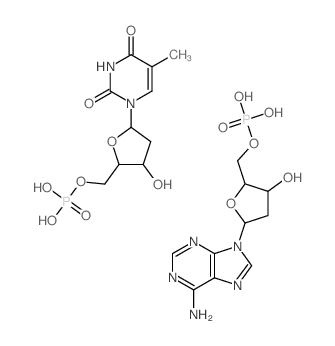DNA binding properties of novel distamycin analogs that lack the leading amide unit at the N-terminus.
S Bhattacharya, M Thomas
文献索引:Biochem. Biophys. Res. Commun. 267(1) , 139-44, (2000)
全文:HTML全文
摘要
First examples of distamycin (Dst) analogs which lack hydrogen bond donor or acceptor groups at the N-terminus have been synthesized. The first molecule of this series, which is a bispyrrole peptide, did not exhibit any detectable binding with double-stranded (ds) DNA. However, all other analogs did bind strongly to AT-rich sequences of ds-DNA, with the binding affinities increasing as a function of the number of repeating pyrrole carboxamide units. These results imply that a hydrogen bond donor or acceptor atom per se at the N-terminus is not a prerequisite for DNA binding in the case of pyrrole carboxamide-based Dst analogs. However, in the absence of H-bond donor or acceptor at the N-terminus, a minimum of three pyrrole carboxamide units is necessary for the onset of DNA binding. Beyond this minimum number, the binding affinity increases as a function of the number of pyrrole units, as a result of the greater availability of hydrogen bonding and van der Waals surface. Experiments with poly[d(G-C)] have shown that the presence of the N-terminus formamide group is not inevitable for GC binding of this class of molecules. The observation that the N-terminus formamide unit can be dispensed with suggests that these molecules, which are much easier to synthesize and functionalize, can be used in place of the conventional analogs of distamycin for the development of novel minor groove binders with extended sequence recognition properties.Copyright 2000 Academic Press.
相关化合物
| 结构式 | 名称/CAS号 | 分子式 | 全部文献 |
|---|---|---|---|
 |
聚脱氧腺苷酸.聚胸苷酸 钠盐
CAS:86834-22-2 |
C20H29N7O14P2 |
|
Homopolymer tract length dependent enrichments in functional...
2004-12-14 [BMC Genomics 5 , 95, (2004)] |
|
Energetics of binding the mammalian high mobility group prot...
2005-09-23 [J. Mol. Biol. 352(3) , 629-45, (2005)] |
|
Poly(dA).poly(dT) forms very stable nucleosomes at higher te...
1995-02-03 [J. Mol. Biol. 245(5) , 559-67, (1995)] |
|
Investigation of DNA binding modes for a symmetrical cyanine...
2001-06-01 [J. Biomol. Struct. Dyn. 18(6) , 844-56, (2001)] |
|
[Hydration and stability of the double helical complex poly(...
1994-01-01 [Biofizika 39(4) , 628-36, (1994)] |